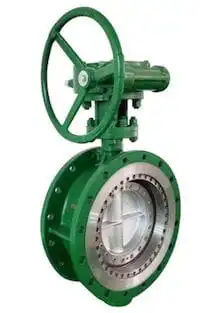
The innovative structural characteristics of the triple eccentric butterfly valve make it have the following main characteristics:
① It integrates regulation and disconnection, and has good controllability.
The triple eccentric butterfly valve is designed with double safety structure. Two independent thrust rings are respectively installed on the upper and lower sides of the butterfly plate, and the inner and outer parts of the lower end of the valve are designed with independent valve stem fly out prevention mechanisms.
② There is no dead zone design and small opening torque.
The valve plate of triple eccentric butterfly valves is an elliptical cone, and its surface is welded with hard alloy, which has excellent wear resistance.
③ The triple eccentric butterfly valve doesn’t leak, and has high-temperature and high-pressure resistance.
The biggest feature of triple eccentric butterfly valves is that the sealing structure has been fundamentally changed. It is no longer a position seal, but a torque seal. At the same time, due to the selection of metal seats and the structural characteristics of face seals, the problem of high temperature and high pressure is solved.
In addition, the triple eccentric butterfly valve has a more compact structure, reduces the chance of the valve seat directly contacting the medium, and the degree of erosion of the valve seat, extending the service life of the valve seat. The valve seat and sealing surface of the triple eccentric butterfly valve can be replaced, which greatly reduces the maintenance cost.
